This article needs additional citations for verification .(December 2009) |
Twilight Zone literature is an umbrella term for the many books and comic books which concern or adapt The Twilight Zone television series.
This article needs additional citations for verification .(December 2009) |
Twilight Zone literature is an umbrella term for the many books and comic books which concern or adapt The Twilight Zone television series.
Gold Key Comics published a long-running Twilight Zone comic that featured the likeness of Rod Serling introducing both original stories and occasional adaptations of episodes. The comic outlived the television series by nearly 20 years and Serling by nearly a decade. A later revival of Twilight Zone comics was published by Now Comics, spinning off of the 1980s revival of the show.
In 2008, The Savannah College of Art & Design and publisher Walker & Company collaborated to produce a series of graphic novel adaptations of episodes from the series that were written by Rod Serling. [1]
Beginning in December 2013, comics publisher Dynamite Entertainment ran a multi-issue series, written by J. Michael Straczynski and with art by Guiu Vilanova. [2]
Marc Scott Zicree's episode-by-episode guide of the original series, The Twilight Zone Companion (1982), was published by Bantam Books. Later editions were updated to include a brief chapter acknowledging the 1985 revival series, although no additions or corrections were made to the previously existing text.
Martin Grams Jr.'s volume, The Twilight Zone: Unlocking the Door to a Television Classic (2008), covers production information for each episode of the original series in great detail. At 800 pages, it is much longer and more detailed than Zicree's guide, and makes a point of identifying and correcting Zicree's misstatements and errors.[ citation needed ]
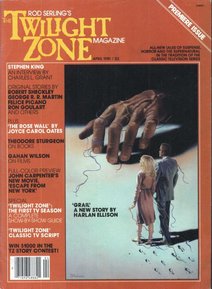 First issue of The Twilight Zone Magazine, April 1981 | |
| Editor | T. E. D. Klein, Michael Blaine, Tappan King |
|---|---|
| Categories | horror fiction |
| Frequency | Monthly |
| First issue | April 1981 |
| Final issue | June 1989 |
| Country | United States |
| ISSN | 0279-6090 |
Beginning in 1981 and with T. E. D. Klein as editor, The Twilight Zone Magazine (also known as Rod Serling's The Twilight Zone Magazine) featured horror fiction and to some extent other forms of fantasy and some borderline science fiction. [3] The TZ Magazine reviewed and previewed new movies while publishing articles about The Twilight Zone original and revival ( The Twilight Zone ) television series, among other cultural oddities. The Twilight Zone Magazine was initially successful; by 1983 it was selling 125,000 issues a month, outselling magazines like Analog . [4] Under Klein's editorship, the magazine published several noted writers, including Harlan Ellison, Stephen King, Pamela Sargent, and Peter Straub. [4] In late 1985, Michael Blaine succeeded Klein as editor. [5] From March 1986 until its last issue of June 1989 the editor was Tappan King, who also edited its "twisted sister" publication, Night Cry . It was the most reliable market for much of the best short horror in that period and appealed to audiences for the likes of Fangoria and Starlog , as well as for The Magazine of Fantasy and Science Fiction and Whispers . Like Omni Magazine , which it also somewhat resembled, it was published by a company better-known for "skin" magazines, Gallery 's Montcalm Publishing. [4]
The all-fiction digest-sized companion, Night Cry , makes a cameo in The Simpsons 300th episode, "Barting Over". On occasion, the magazine and digest reprinted often-anthologized short stories, introducing a new generation of horror aficionados to classic short stories by veteran writers, such as "The Voice in the Night" by William Hope Hodgson, and "The Bookshop" by Nelson Bond.
Numerous novelizations were published based upon episodes of The Twilight Zone. In 2003, the first Twilight Zone novel was published, entitled The Twilight Zone Book 1: Harvest Moon, which was written by John J. Miller. Two sequels were later published. The first sequel was entitled The Twilight Zone Book 2: A Gathering of Shadows which was written by Russell Davis. The second sequel was entitled The Twilight Zone Book 3: Deep in the Dark written by John Helfers.
In 2004, Black Flame released the five novelizations based on 2 episodes each from the 2002 series. Five authors, Jay Russell, Pat Cadigan, Paul Woods, K. C. Winters and Christa Faust, adapted the episodes.
Several volumes of original short stories were published under The Twilight Zone brand, the first of which was edited by Rod Serling, himself.

Richard Burton Matheson was an American author and screenwriter, primarily in the fantasy, horror, and science fiction genres.

The Twilight Zone is an American media franchise based on the anthology television series created by Rod Serling in which characters find themselves dealing with often disturbing or unusual events, an experience described as entering "the Twilight Zone". The episodes are in various genres, including fantasy, science fiction, absurdism, dystopian fiction, suspense, horror, supernatural drama, black comedy, and psychological thriller, frequently concluding with a macabre or unexpected twist, and usually with a moral. A popular and critical success, it introduced many Americans to common science fiction and fantasy tropes. The first series, shot entirely in black-and-white, ran on CBS for five seasons from 1959 to 1964.

Skeleton Crew is a collection of short fiction by American writer Stephen King, published by Putnam in June 1985. A limited edition of a thousand copies was published by Scream/Press in October 1985 (ISBN 978-0910489126), illustrated by J. K. Potter, containing an additional short story, "The Revelations of 'Becka Paulson", which had originally appeared in Rolling Stone magazine, and was later incorporated into King's 1987 novel The Tommyknockers. The original title of this book was Night Moves.
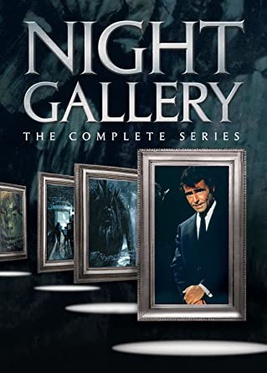
Night Gallery is an American anthology television series that aired on NBC from December 16, 1970, to May 27, 1973, featuring stories of horror and the macabre. Rod Serling, who had gained fame from an earlier series, The Twilight Zone, served both as the on-air host of Night Gallery and as a major contributor of scripts, although he did not have the same control of content and tone as he had on The Twilight Zone. Serling viewed Night Gallery as a logical extension of The Twilight Zone, but while both series shared an interest in thought-provoking dark fantasy, more of Zone's offerings were science fiction while Night Gallery focused on horrors of the supernatural.
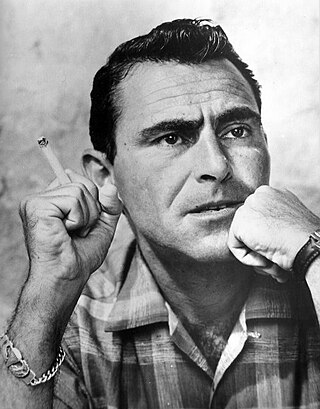
Rodman Edward Serling was an American screenwriter and television producer best known for his live television dramas of the 1950s and his anthology television series The Twilight Zone. Serling was active in politics, both on and off the screen, and helped form television industry standards. He was known as the "angry young man" of Hollywood, clashing with television executives and sponsors over a wide range of issues, including censorship, racism, and war.

"Where Is Everybody?" is the first episode of the American anthology television series The Twilight Zone and was originally broadcast on 2 October 1959, on CBS. It is one of the most realistic Twilight Zone episodes, as it features no supernatural elements and is based on fairly straightforward extrapolation of science.
"Perchance to Dream" is the ninth episode of the American television anthology series The Twilight Zone. It originally aired on November 27, 1959, on CBS. The title of the episode and the Charles Beaumont short story that inspired it is taken from Hamlet's "To be, or not to be" speech.
"It's a Good Life" is the eighth episode of the third season of the American television series The Twilight Zone, and the 73rd overall. It was written by series creator/showrunner Rod Serling, based on the 1953 short story "It's a Good Life" by Jerome Bixby. The episode was directed by James Sheldon, and is considered by some, such as Time and TV Guide, to be one of the best episodes of the series. It originally aired on November 3, 1961. The episode was one of four from the original 1959 series which formed the basis of the 1983 film Twilight Zone: The Movie.

Michael Shea was an American fantasy, horror, and science fiction author. His novel Nifft the Lean won the World Fantasy Award, as did his novella Growlimb.

"To Serve Man" is the 24th episode of the third season of the anthology series The Twilight Zone, and the 89th overall. It originally aired on March 2, 1962, on CBS. Based on Damon Knight's 1950 short story of the same title, the episode was written by Rod Serling and directed by Richard L. Bare. It is considered one of the best episodes from the series, particularly for its final twist.
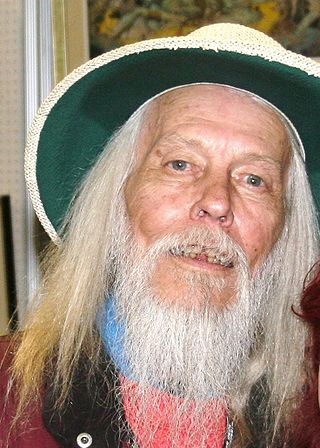
George Clayton Johnson was an American science fiction writer, who co-wrote with William F. Nolan the novel Logan's Run, the basis for the MGM 1976 film. He also wrote television scripts for The Twilight Zone, and the first telecast episode of Star Trek, entitled "The Man Trap". He also wrote the story and screenplay on which the 1960 and 2001 films Ocean's Eleven were based.

"The Last Night of a Jockey" is an episode of the American television anthology series The Twilight Zone. In this episode, a diminutive jockey's wish to be a big man is granted. Rod Serling wrote the episode specifically for Mickey Rooney, who is the only actor to appear in it.

The Twilight Zone is an anthology television series which aired from September 27, 1985, to April 15, 1989. It is the first of three revivals of Rod Serling's acclaimed 1959–64 television series, and like the original it featured a variety of speculative fiction, commonly containing characters from a seemingly normal world stumbling into paranormal circumstances. Unlike the original, however, most episodes contained multiple self-contained stories instead of just one. The voice-over narrations were still present, but were not a regular feature as they were in the original series; some episodes had only an opening narration, some had only a closing narration, and some had no narration at all. The multi-segment format liberated the series from the usual time constraints of episodic television, allowing stories ranging in length from 8-minutes to 40-minute mini-movies. The series ran for two seasons on CBS before producing a final season for syndication.

The Twilight Zone is an American fantasy science fiction horror anthology television series created and presented by Rod Serling, which ran for five seasons on CBS from October 2, 1959, to June 19, 1964. Each episode presents a standalone story in which characters find themselves dealing with often disturbing or unusual events, an experience described as entering "the Twilight Zone", often with a surprise ending and a moral. Although often considered predominantly science-fiction, the show's paranormal and Kafkaesque events leaned the show much closer to fantasy and horror. The phrase "twilight zone" has entered the vernacular, used to describe surreal experiences.

Weird West is a term used for the hybrid genres of fantasy Western, horror Western and science fiction Western. The term originated with DC's Weird Western Tales in 1972, but the idea is older as the genres have been blended since the 1930s, possibly earlier, in B-movie Westerns, comic books, movie serials and pulp magazines. Individually, the hybrid genres combine elements of the Western genre with those of fantasy, horror and science fiction respectively.
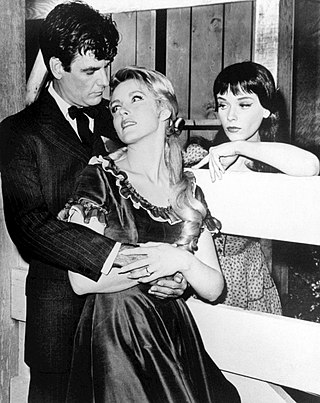
"Jess-Belle" is an episode of the American television science fiction and fantasy anthology series The Twilight Zone. In this episode, a young woman, whose name sounds like "Jezebel", spurned by the man she loves, becomes a witch in order to make him love her.
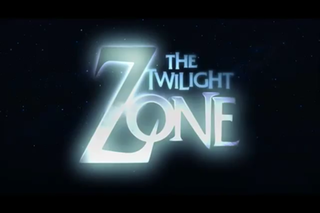
The Twilight Zone is a science fiction horror anthology television series, presented by Forest Whitaker. It is the second of three revivals of Rod Serling's original 1959–64 television series. It aired for one season on the UPN network, with actor Forest Whitaker assuming Serling's role as narrator and on-screen host. It was a co-production between Spirit Dance Entertainment, Trilogy Entertainment Group, Joshmax Productions Services, and New Line Television. It premiered on September 18, 2002, and aired its final episode on May 21, 2003.

Twilight Zone: 19 Original Stories on the 50th Anniversary is an anthology of short stories written by various authors and edited by Carol Serling, the widow of series creator Rod Serling. Each story was written with themes or styles similar to The Twilight Zone episodes, including a narrated introduction and conclusion. Authors who contributed stories include Twilight Zone veterans Earl Hamner Jr., Alan Brennert, William F. Wu, and Rod Serling. Reviewers listed some of the better stories as being Kelley Armstrong's "A Haunted House of Her Own", Alan Brennert's "Puowaina" and Mike Resnick and Lezli Robyn's "Benchwarmer".

Jason Vincent Brock is an American author, artist, editor and filmmaker.
{{cite news}}: |author= has generic name (help)CS1 maint: multiple names: authors list (link)